Travel Dealz Editor Dennis spent a few days in Quito, Ecuador en route to the Galapagos Islands. The Galapagos Islands can only be reached via domestic flights from mainland Ecuador. Accordingly, at least one layover in Quito or Guayaquil is inevitable. Here are Dennis’ tips for a stopover in Quito, which in the best-case scenario will save you a little research work.
Table of Contents
Booking & Inspiration for the Trip
I actually hadn’t had Ecuador on my radar as a travel destination for a very long time. Until last year, when there was a breaking deal for Lufthansa’s business class from Switzerland to Ecuador. I booked this fully flexibly, so I could cancel at any time. When a good friend was supposed to DJ in Ecuador (but on a different date than I had booked), I cancelled the fare again and booked a cheap KLM flight from Barcelona via Amsterdam to Quito in economy class (approx. 430€ for the round trip). Ultimately, we then combined the trip to Ecuador with a visit to the Galapagos Islands.
We were in Quito for 4 days, which was actually far too little and almost tempts us to come back again and just look at the mainland of Ecuador.
The Currency – the US Dollar
The official currency in Ecuador is the US dollar. After the hyperinflation of Ecuador’s Sucres in the late 1990s, the US dollar became the official currency in 2000.
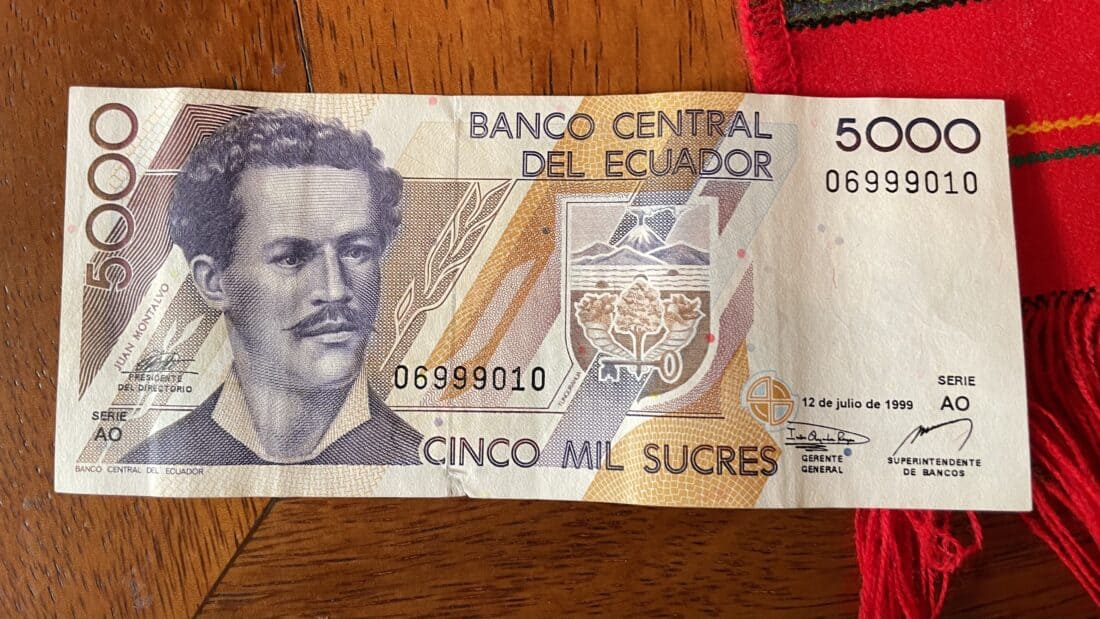
But be careful: With larger bills (50 or 100 USD) you could have problems. USD 20 bills (or smaller) are preferred here. In contrast to the United States, a lot of USD coins are still used here (for example, there are many USD 1 coins, which are very rarely found in the USA).
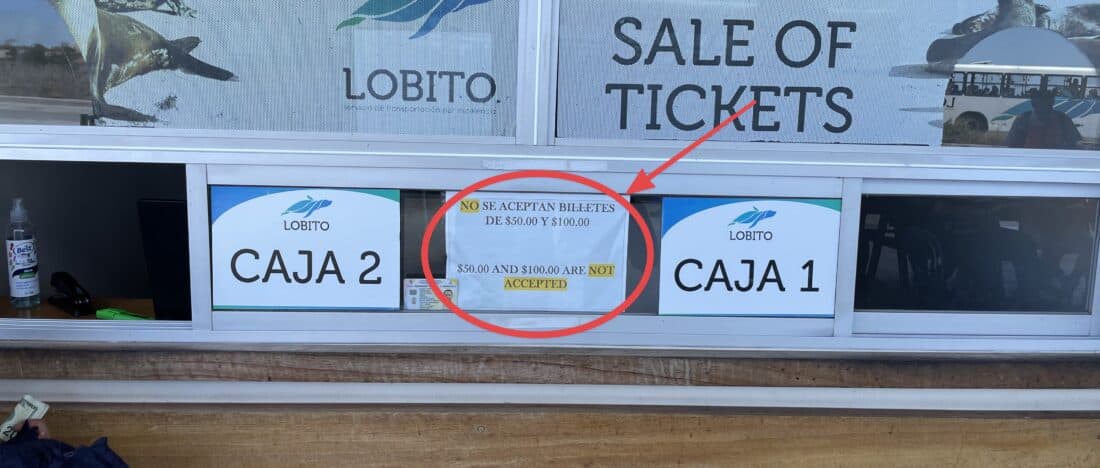
Entry (as of March 2022)
I couldn’t believe it, but with vaccination, we didn’t need to do any tests at all (not even to Galapagos), even with a single J&J vaccination (which would not always be the case in Europe). The world is opening again!
However, a fairly extensive form had to be filled out. Residence, flight ticket for the return journey or travel health insurance did not have to be presented.
My tip: Before booking your trip, please find out about the entry regulations using the official Ecuadorian sources. You should also check several times before departure (at least 1 week before) so that you can take certain precautions if the regulations change. The situation has changed for the better for us. At first, we thought we needed a test for Ecuador and an additional test for the Galapagos Islands. In the end, the vaccination was enough.
Language
Without Spanish, things are very tough. Luckily, my companion spoke Spanish, otherwise, the trip would have been much more difficult, although it would certainly have been doable.
So it’s a good idea to either have internet (for Google Translate), learn a little Spanish (“Un café por favor”), or have a Spanish-speaking companion with you. 🙂
From Airport to Accommodation (Taxi/Uber)
An Uber costs between US$20 (~€19) and US$25 (~€23) one way to downtown Quito. However, I had already booked my transportation via booking.com. This one cost me US$29.50 (~€27.55) but it was worth it to me, because when you book via booking.com, the driver with a name tag is at the arrivals desk at the airport and you don’t have to worry about anything. Still, I took an Uber to the airport 4 days later.
I would not recommend public transport from the airport. The whole thing takes 2-3x as long and after a long journey, you usually want to get to your accommodation quickly.
Public Transportation
Unfortunately, there is no subway or metro in Quito. This is under construction and should have been completed 2 years ago, but it is done yet. There are also no trams. That’s why you only travel by bus. The buses are divided into normal buses for US$0.25 (~€0.23) per ticket and metro buses for US$0.35 (~€0.33) per ticket.
The normal buses in particular are super chaotic and they often even stop at unofficial stops (without signs, only locals know about the stops). The whole thing reminded me a lot of Africa.
Google Maps also shows you bus numbers, which are not on the buses. If you don’t speak Spanish, you’re really lost here. The Metro buses are a bit easier to understand. There are proper stops and a signposted route network.
All in all, the trips with the normal buses were really an experience. Depending on how sensitive you are, it might be worth a try. Arriving relaxed at the destination is not possible, because the bus driver has an assistant who shouts through the bus and makes announcements and shoos the passengers away. Also, the bus driver is speeding through the streets like a madman…
I would therefore recommend using an Uber for longer journeys. This is also safer than the local taxis because with Uber everything is trackable and you know immediately how many ratings the driver has. If you have problems, the support will help you. Unfortunately, I read a not-so-great report on Quora about tourists being kidnapped from a taxi in Guayaquil. The likelihood of that happening with an Uber is far lower.
Altitude Sickness
Since Quito is the second-highest capital city in the world (2,784 m or 9,133 ft above sea level), you may develop symptoms of altitude sickness. Unfortunately, it hit me hard the day after landing. Headaches, shortness of breath and dizziness were the order of the day. It was the worst at night and in the morning. During the night I felt like I couldn’t breathe.
During the day I got myself coca leaves, which helped a lot. You chew them and they dissolve. You can get them on the street from vendors for US$3 (~€3) per packet (certainly the “foreigner price”).
The Sunfo plant, which can be found in the mountains of Ecuador, also helps. I tried this two days after landing in the form of a tea and it helped me tremendously. That day we went higher up into the mountains of Quito, but more on that below. In the city centre, Sunfo is difficult to get.

Cash or Credit Card?
You definitely need cash! Especially in the markets, in smaller shops or in cheap restaurants, cards are often not accepted or there are surcharges of at least US$0.50 (~€0.47). Also as described above, only cash is accepted on public transport.
The cheapest way to withdraw money is from the Produbanco ATMs. Produbanco does not charge its own fee there, but your credit card may charge a cash withdrawal and foreign currency fee.
Unfortunately, Produbanco‘s ATMs are not as common as those of Banca Guayaquil and Banca Pichincha. The ATM at Banca Guayaquil charges a flat fee of US$1.50 (~€1.40) and at Banca Pichincha, I was charged a whopping US$4.48 (~€4.18) for a US$200.00 (~€186.76) withdrawal. It is therefore not recommended to withdraw money from these machines.
Internet/WiFi
I bought an eSIM through Airalo with 1 GB of data for US$9.50 (~€8.87). That was the best solution for me and the internet was always available and lightning-fast. After my extensive eSIM provider test some time ago, Airalo turned out to be the cheapest provider for almost all countries. That’s why I no longer bother to make a price comparison with other providers for my travel country. However, it may well be that there are cheaper providers specifically for Ecuador.
There are also SIM cards on-site, but it is important to me to remain reachable by phone and that works great with an eSIM in parallel with your usual SIM. That’s why I didn’t test it.
However, if you are planning to travel to the Galapagos Islands, a local SIM card or an eSIM with calling functionality at good local rates may be advisable. Because there is hardly any internet on the Galapagos Islands and you are much more dependent on calls (for example to order a taxi).
Accommodations
The prices for hotels and Airbnbs are generally very cheap in Quito. You can book a decent stay starting at €45 per night. For example, our Airbnb only cost us this much and it was a newly-built apartment with a spa, pool and gym in the building in a great location in the city (near the botanical gardens).
To give you an example, the Hilton Colon Quito costs upwards of €100 per night, but I didn’t see a lot of added value here compared to our Airbnb (with self-check-in and convenient check-in and check-out times), even with my Diamond status.
In general, I would advise against booking hotels or Airbnbs near Mercado Central. The area is nice to visit, but it gets a little rough at night and there is a lot of prostitution there too. In return, there are cheap restaurants here (e.g. lunch deals for US$3 (~€3) incl. starter, main course and guava juice).
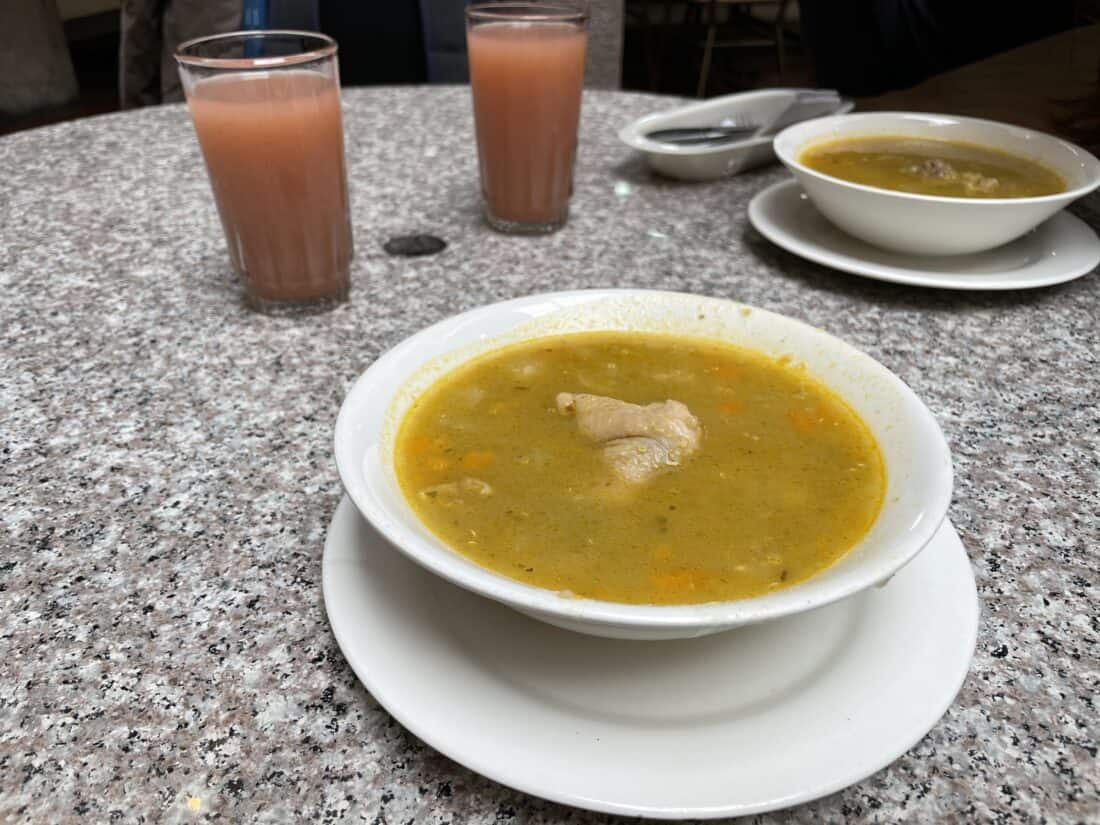
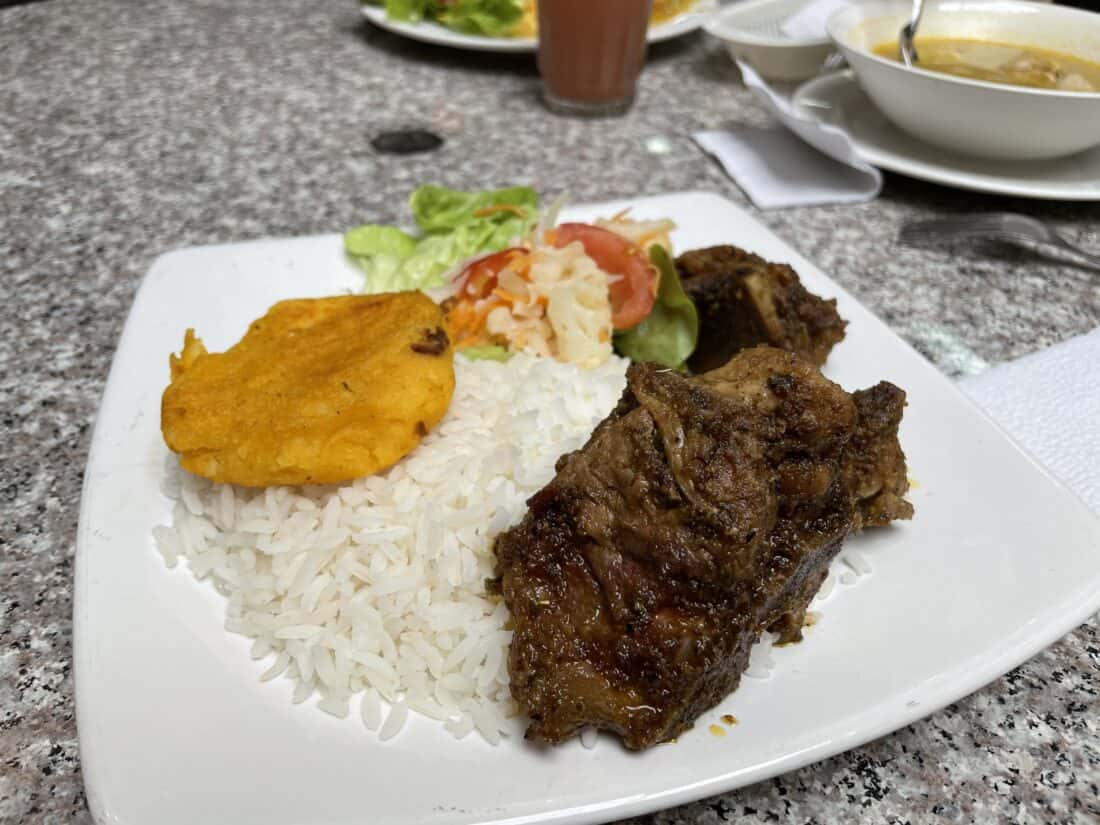
Crime and Safety
We personally have never had any problems. But it has to be said that there is a lot of begging, primarily on the streets around Mercado Central and on the buses. However, it wasn’t worse than e.g. in Berlin.
Overall we always felt safe, but at night and in crowded places, you should be extra careful with your valuables. Holding your cell phone and not really perceiving your surroundings can quickly end badly. You should also not leave your wallet in the back pocket of your pants. But these tips certainly apply to Rome, New York and other major cities around the world.
One of our Airbnb Experience hosts wouldn’t let us take the bus home from Mercado Central that evening due to safety concerns. We did it anyway and were just careful.
Climate
Quito has a subtropical highland climate. The temperatures remain quite stable throughout the year. However, there is more precipitation in the winter months than in the summer months. In March 2022 the weather was very mixed. Sometimes there was a bright blue sky with sun, cloudy sky, and rain showers in one day.
One of our tour guides tried to explain the weather like this: “The weather in Quito is like women’s minds: it can change very quickly.”
Having a good rain jacket in your luggage is certainly not a bad idea. Don’t forget the sunscreen either, because the sun around the equator is particularly intense in spring and autumn.
Things to Do
Unfortunately, since we were only in Quito for 4 days, we couldn’t do as much as we actually wanted. There are really a lot of interesting things to do in Quito and the surrounding area. Below are my recommendations.
Free Walking Tour Quito
We found the Free Walking Tour in Quito via Google and it was really worth getting to know the city first like this. Of course, the guides live from the tips. So you should have some small change ready at the end of the tour (we gave US$10 (~€9) (US$5 (~€5) p.p.)). The tour lasts about 3 hours and first goes to the roof of the community hostel, from which you have a great view. Then it goes to some churches (including the San Francisco Church) and the Mercado Central. There you can taste different fruits. But the guide demands US$1 (~€1) compensation per person, which goes directly to the seller. But it’s worth it because you really get a lot of different fruits to try. Later you will also go to the Yumbos chocolate factory, where you will get a small lecture about chocolate production in Ecuador. Of course, you can also buy chocolate bars there, but you don’t have to. In the end, we also got to know some nice people and even met up again.
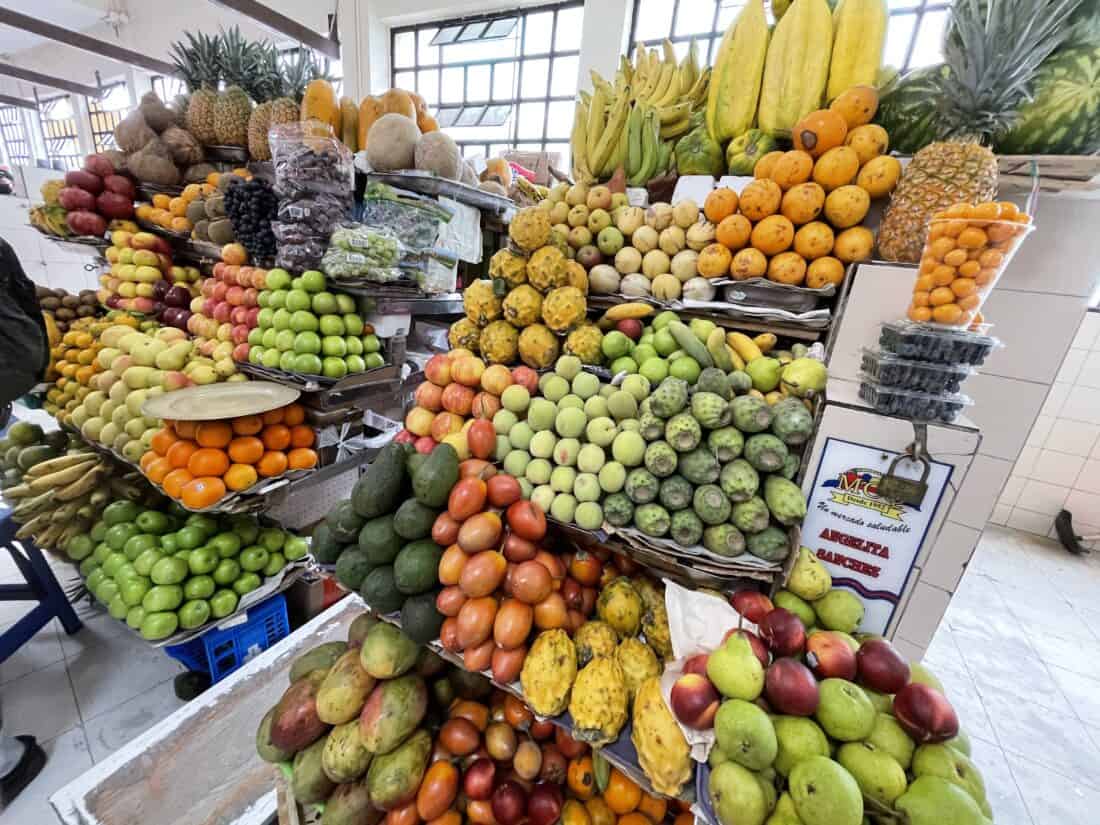
Quito Ecuestre
Riding a horse in the highlands around Quito? That scared me at first. Luckily my companion forced me and so it became the highlight of Quito for me! The tour with Quito Ecuestre lasted a total of 4.5 long hours. It was very exhausting. When we were back at the farm, the organizer offered us a homemade Ecuadorian potato soup, which was delicious. There was also tea from the Sunfo plant, which the guide collected himself in the mountains. This tea helped with altitude sickness because we were at a much higher altitude than in Quito (at about 3,200 m above sea level). We paid US$55 (~€51) per person. The price was really excellent for the performance. Here are some impressions:
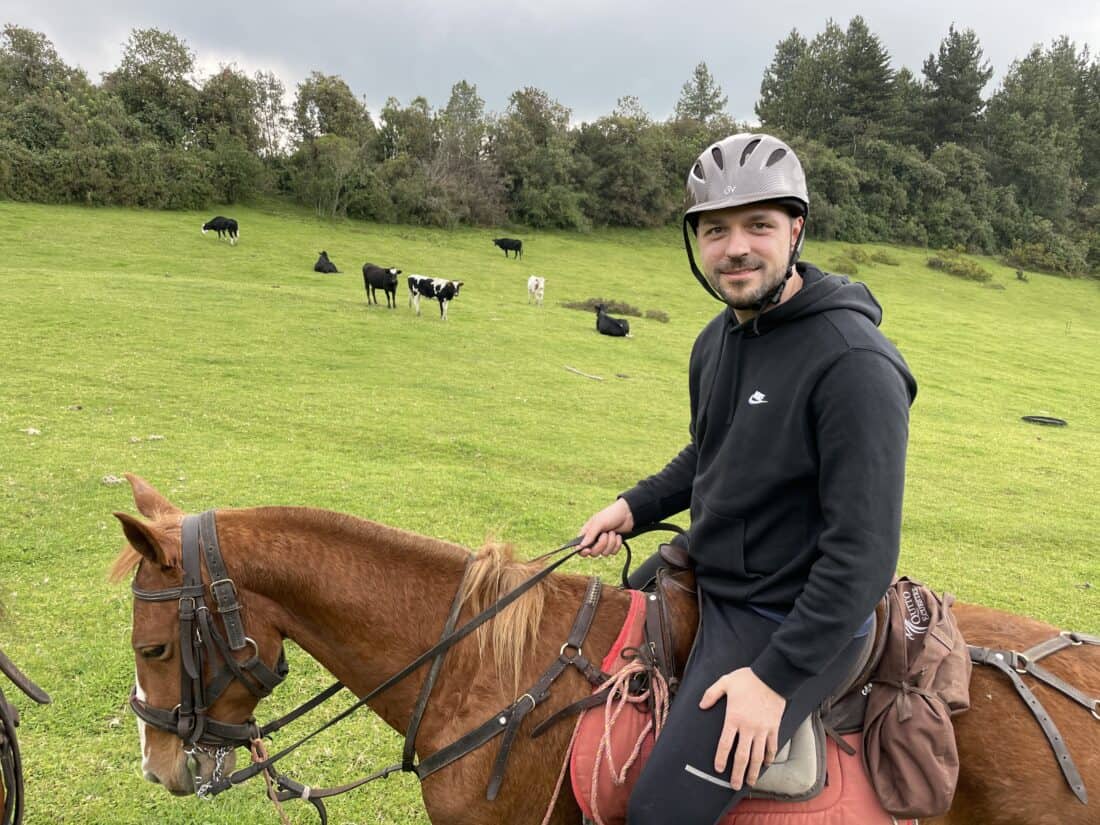
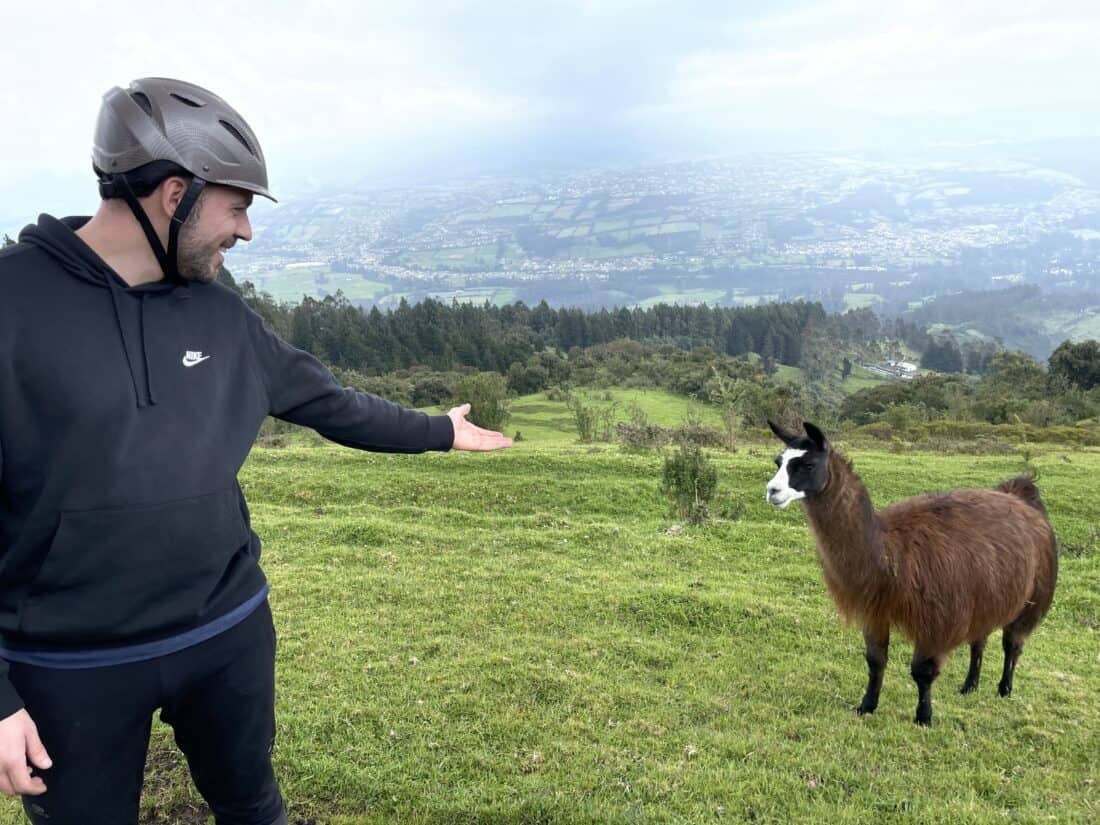
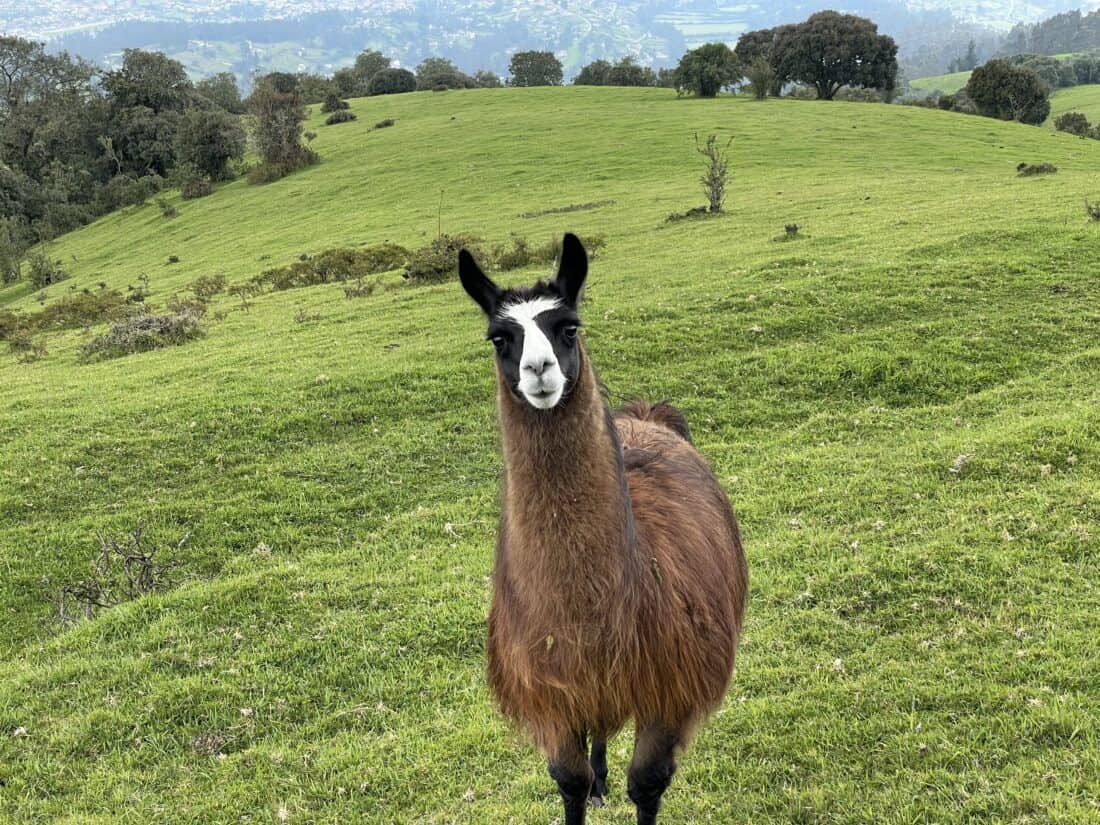
Airbnb Experiences
I’m a fan of Airbnb Experiences. We tried out a coffee experience in one of the best cafés in town (Cafeteria El Cafecito Quito). Since the organizer grows coffee himself, we learned a lot about which coffee beans are the best for which coffee varieties and how the extraction options affect the taste of the coffee.
We also did a cooking class in a 300-year-old colonial-style house. The house had a lot of history, which the host was able to explain to us very well, as the house has always been in the family since it was built. The cooking class itself was interesting but could have been a bit more challenging. We prepared empanadas with cheese and canelazo (Ecuadorian cinnamon liqueur).
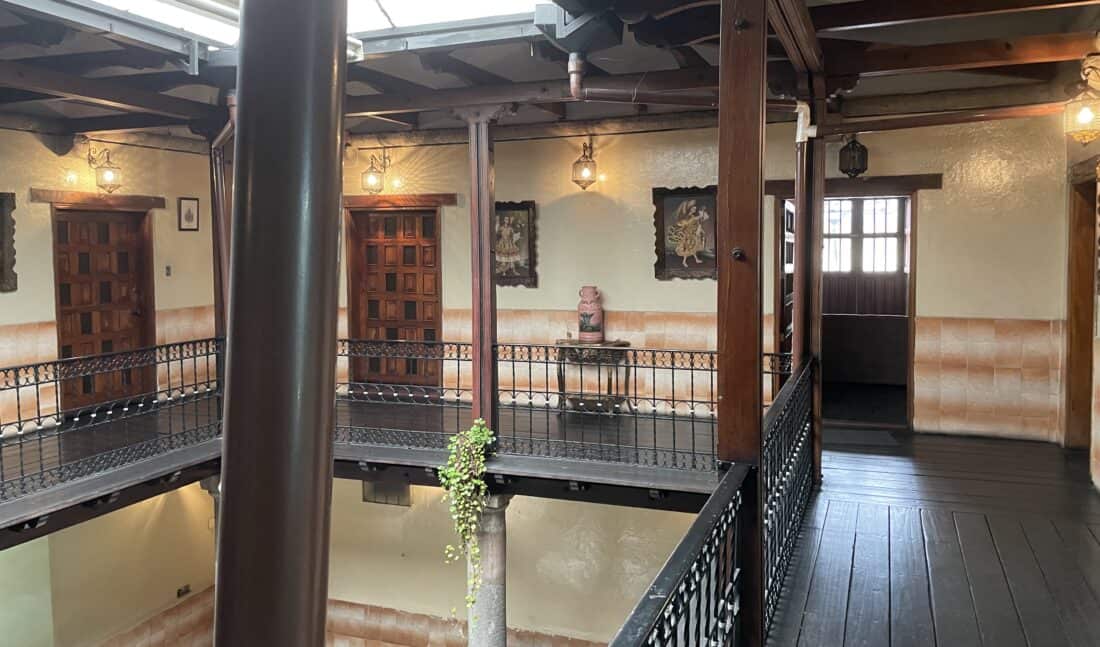
Restaurants
Quito offers you a wide range of restaurants to suit every taste. From cheap US$3 (~€3) lunch deals (see above) to fine dining restaurants, you can find almost everything here. And we’ve tried almost everything.
As a highlight in the high-price segment, I would like to point out the Somos Ecuadorian Restaurant. Great service, excellent food, and a cosy atmosphere.
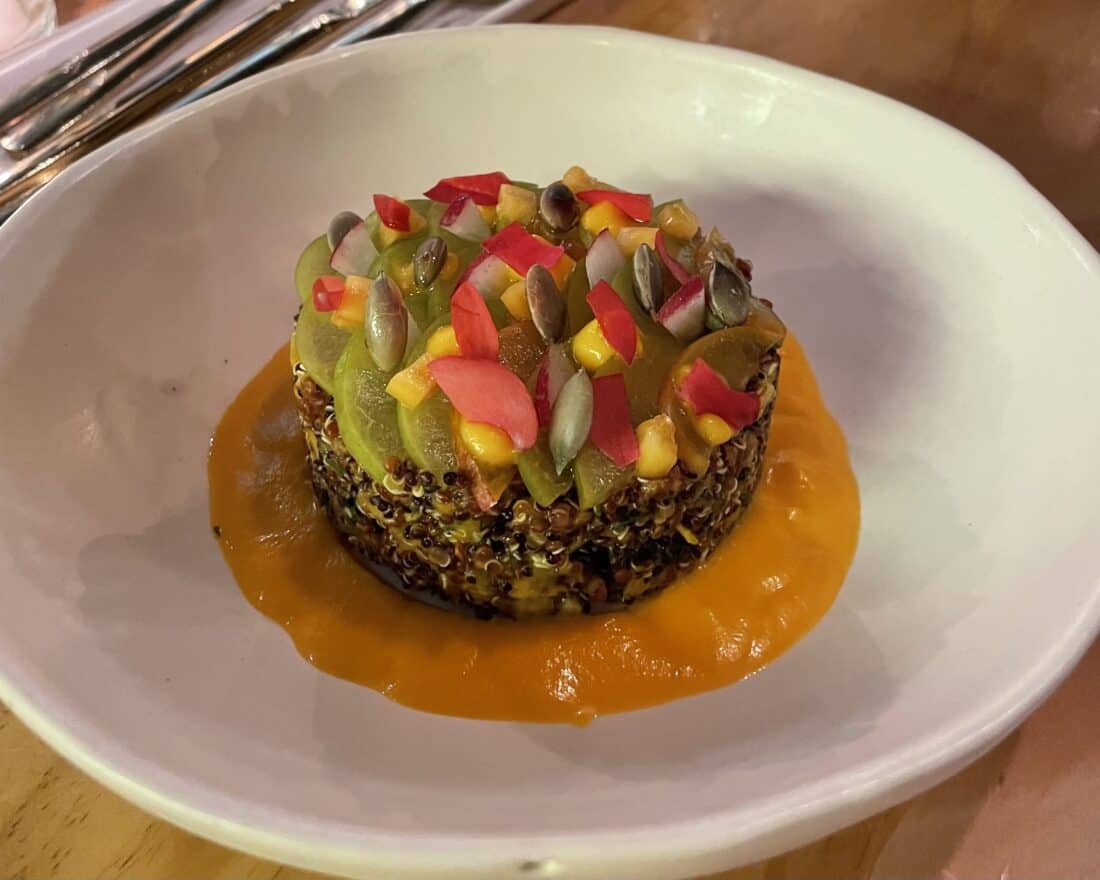

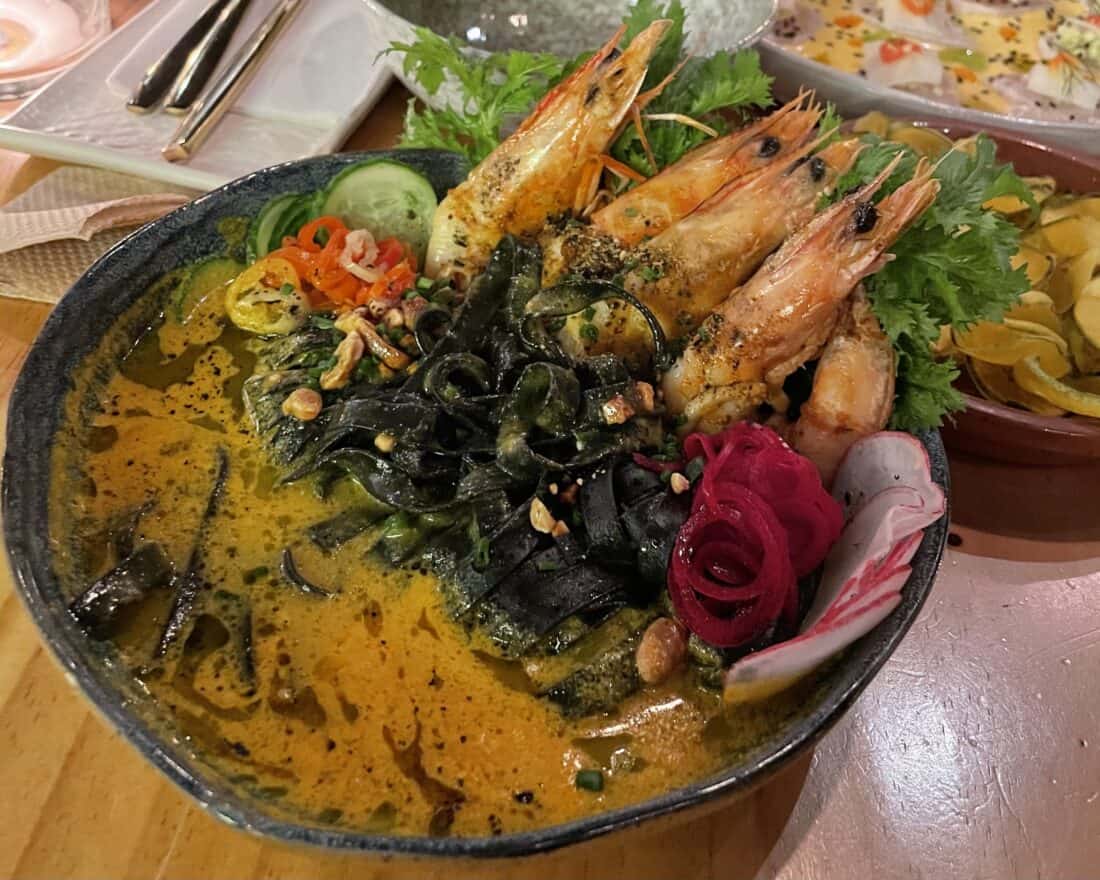
Further recommendations can be found on the following MyMaps map:
Climb Cotopaxi Mountain
Climbing Cotopaxi was an activity I would have liked to do but didn’t have enough time for. You have to be quite fit here, the hike is definitely challenging. You will be rewarded with breathtaking views of the great nature.
Botanical Garden in Quito
We also wanted to visit the botanical garden in Quito but unfortunately, we didn’t have enough time. It is part of a larger park. We walked past the botanical garden one evening and wanted to go in but disappointingly the garden was already closed. But we could see through the fences that it was definitely worth a visit. I would also recommend you book a hotel in this area. It’s much quieter here than further south around Mercado Central and there are good restaurants in the area.
Amazon Day Trip near Baños
If we had had more time, we would certainly have made a day trip to the Amazon region near Baños. This is reported to be one of the highlights in Ecuador. There are many other day tours on GetYourGuide, which you can all take a look at. You can easily fill a whole week with activities in and around Quito, even two weeks.
Conclusion
To be honest, I didn’t have Quito on my radar at all. However, due to the breaking deal last year, a friend’s DJ performance and the need to travel to the Galapagos Islands via mainland Ecuador, the trip “just happened” and I don’t regret it one bit! We met a lot of great people and had a lot of fun. Because of my great experiences in Quito, I’ve already thought about travelling the whole country at some point. The trip also inspired me to brush up on my Spanish skills.
Translated by Ditmar
Cover Picture: © Dennis Schäfer
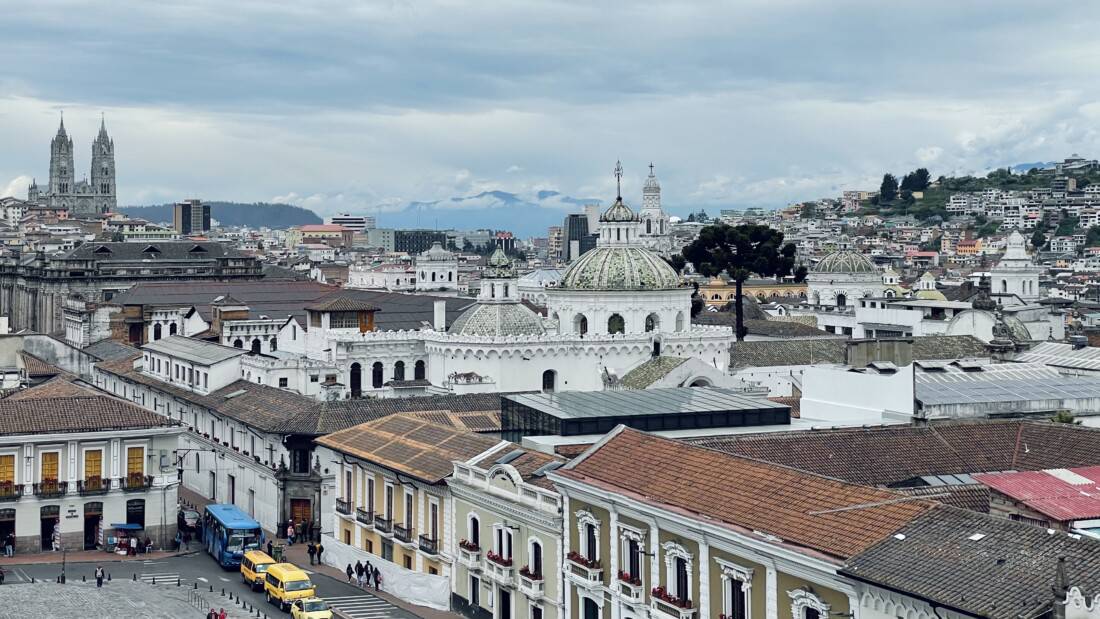
Comment (1)
I found your website in my notes app! We did the walking tour together in Quito and I remember noting down your website. Everything here is incredibly well written. I, too, was flying on my United Miles to the Galapagos with the excursionist perk stopover in Quito when we met. Loved wandering around the website and reading the different reviews and tips. I hope you guys had a great time in Ecuador and I’m glad I came across the post here. Hope all is well!